By Louise Irvine
Each year, Earth Day - April 22 - marks the anniversary of the birth of the modern environmental movement in 1970. However, Earth Day Network works year-round to solve climate change, to end plastic pollution, and to protect endangered species. Discover how the Ardmore studio highlighted sustainability of the natural environment in South Africa.
“It always seems impossible
until it is done.”
In 2011, the United Nations Climate Change Conference of the Parties COP 17 was held in Durban, South Africa. The delegates discussed global warming and established a legally binding deal to limit carbon emissions to take effect in 2020. On display at the conference hotel was Ardmore’s spectacular sculpture of Abundance which represents the needs of South Africa to sustain its natural environment. Ardmore founder Fée Halsted worked with sculptor Petros Gumbi to create the symbolic narrative which unfolds from the bottom tier up, like Trajan’s column in Rome.
As Fée explains, “the base depicts plump maize cobs, the food of the nation …. a bumper crop needs good soil, good rains, plenty of sunshine and tender loving care.” The second tier depicts the Zulu King Shaka, who symbolizes discipline. He stands among his abundant herds of cattle, the wealth of the Zulu people as they produce food, leather and milk, vital to the health and success of the country. One cow is giving birth reminding us of hope and the importance of sustainable farming methods for the enduring cycle of life.
On the third tier, homage is paid to Mahatma Ghandi and Archbishop Bishop Tutu, men of great wisdom and vision. They stand beside the elephant which represents wisdom. In this warning tier, Petros is saying that without wisdom and vision, the wildlife of Africa will vanish, and the wealth of the country will be lost. Painter Sthabisu Hadebe emphasizes this warning with his choice of colors for the sculpture representing the minerals that provided great wealth to South Africa – gold, platinum, coal and diamonds.
Former President Nelson Mandela stands at the top of this symbolic sculpture amid the lions, the kings of the jungle. Madiba showed the world that through forgiveness and godliness, we can live in harmony with the environment. He was quoted in the opening speech at COP17, “It always seems impossible until it is done.” Mandela’s long walk to freedom included steps toward solving the mammoth problem of climate change. He envisioned a world where all people can live a fully dignified life, with clean air to breathe and clean water to drink - and where poor countries are not left with the repercussions of pollution by the rich nations.
Mandela had an appreciation for the beauty and subsistence of nature throughout his life. During his 27 years in jail, he fought to have a garden installed on the roof of his prison, where he and his fellow inmates could grow vegetables for their meals. "To plant a seed, watch it grow, to tend it and then harvest it, offered a simple but enduring satisfaction," he wrote in his autobiography. "The sense of being the custodian of this small patch of earth offered a small taste of freedom."
Nobel Peace laureate Desmond Tutu talked at a rally on the eve of the Durban Cop 17 conference urging mankind to unite in the goal of conquering carbon following the battle to crush apartheid. “Now we are facing another huge, huge enemy. And no one, no country can fight that enemy on his own... An enemy called global warming, climate change,” he said. “We have only one home. This is the only home we have. And whether you are rich or poor, this is your only home... You are members of one family, the human race.”
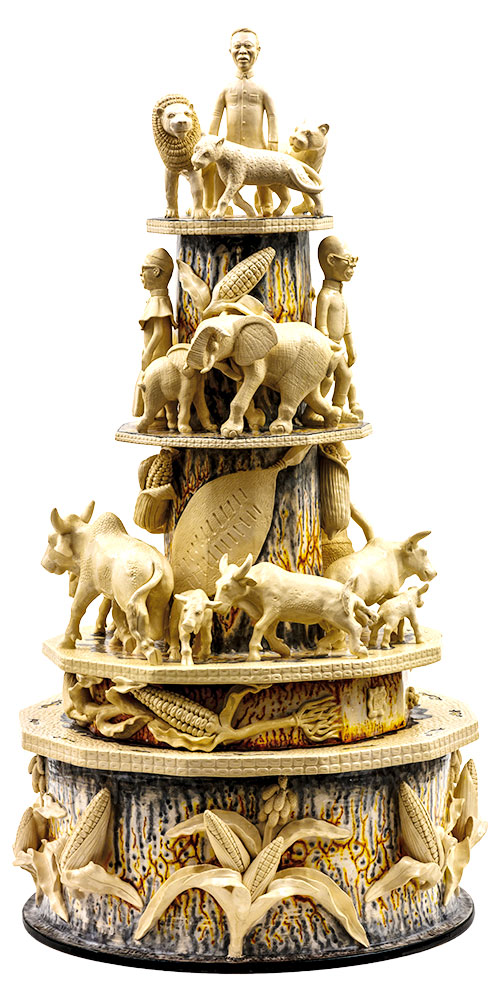
Ardmore Abundance by P. Gumbi & S. Hadebe
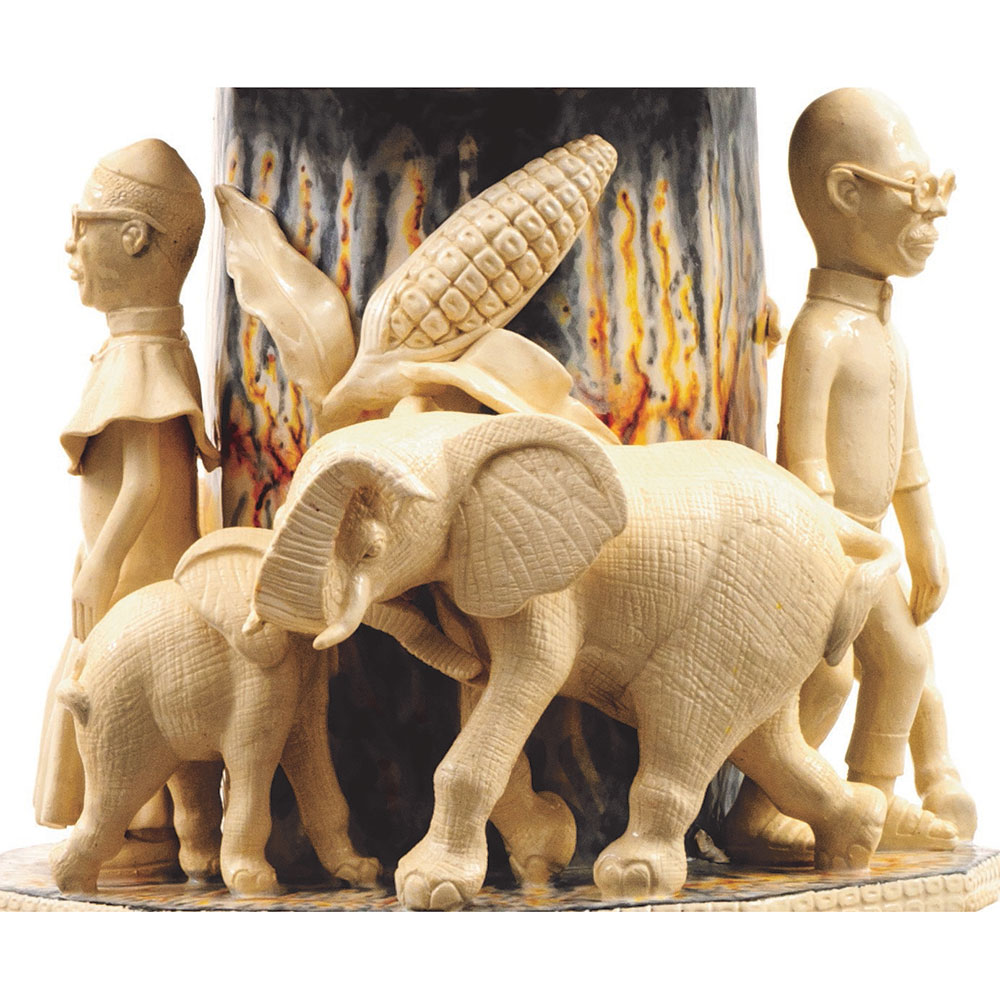
Abundance detail showing Tutu & Ghandi
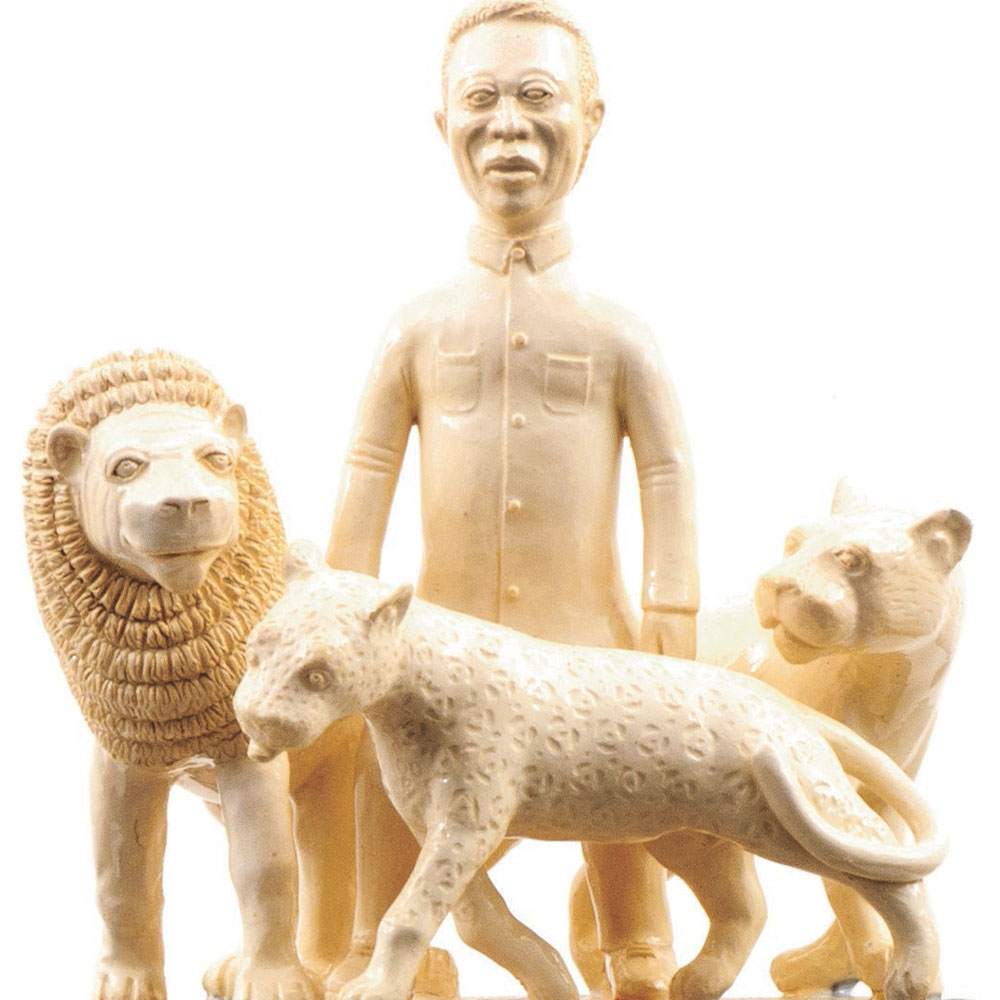
Abundance detail showing Mandela
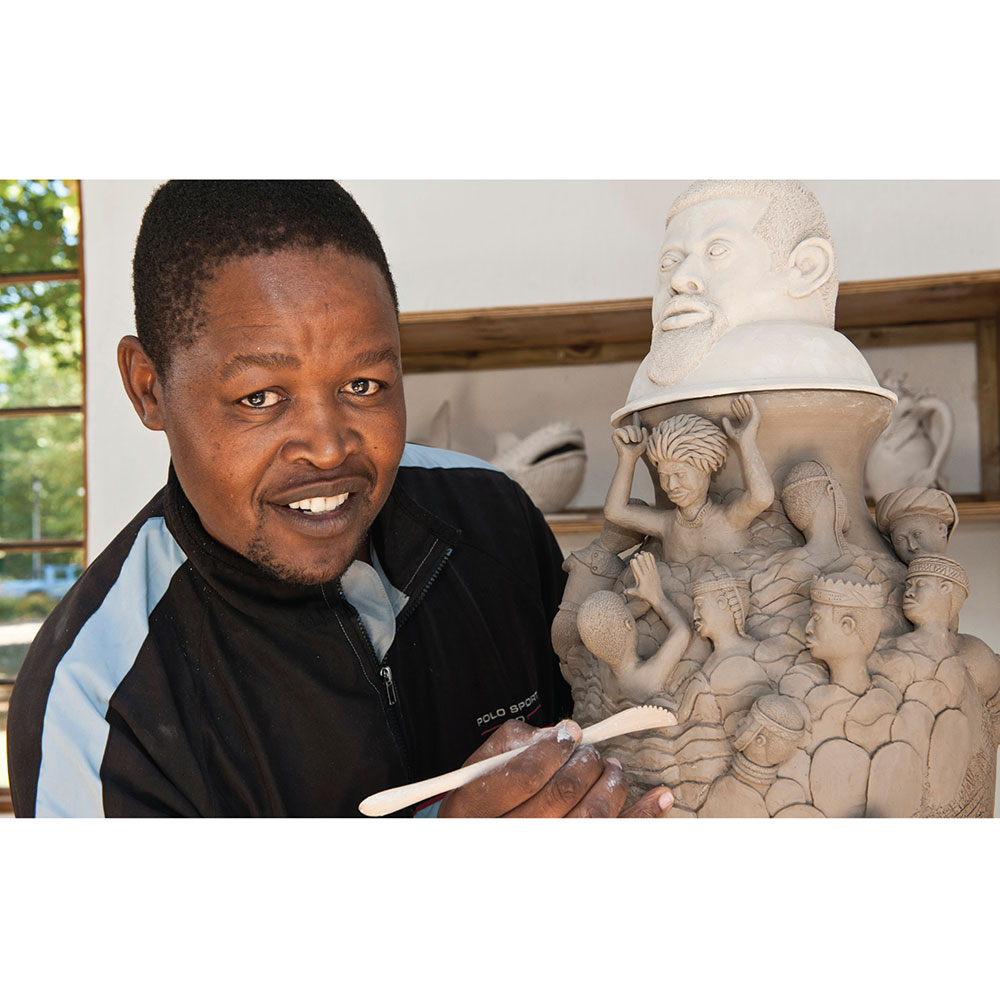
Sculptor Petros Gumbi
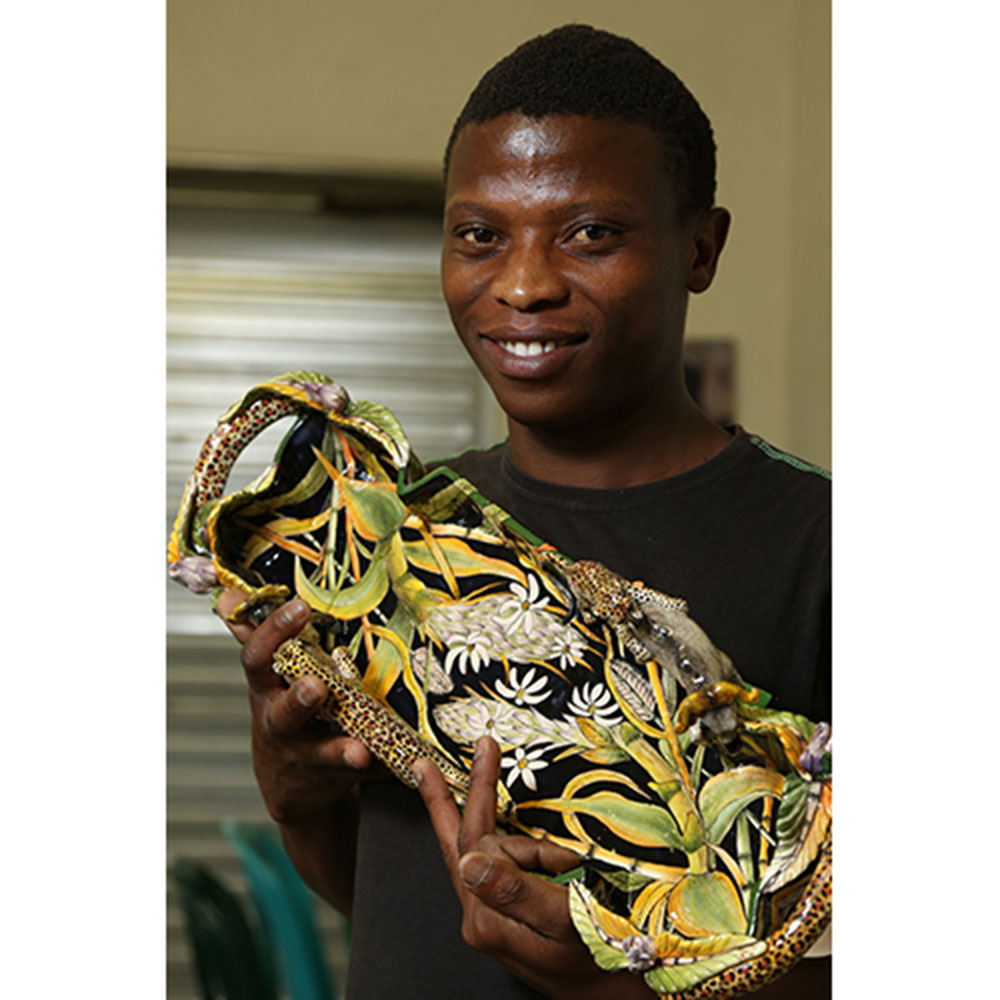
Painter Sthabisu Hadebe
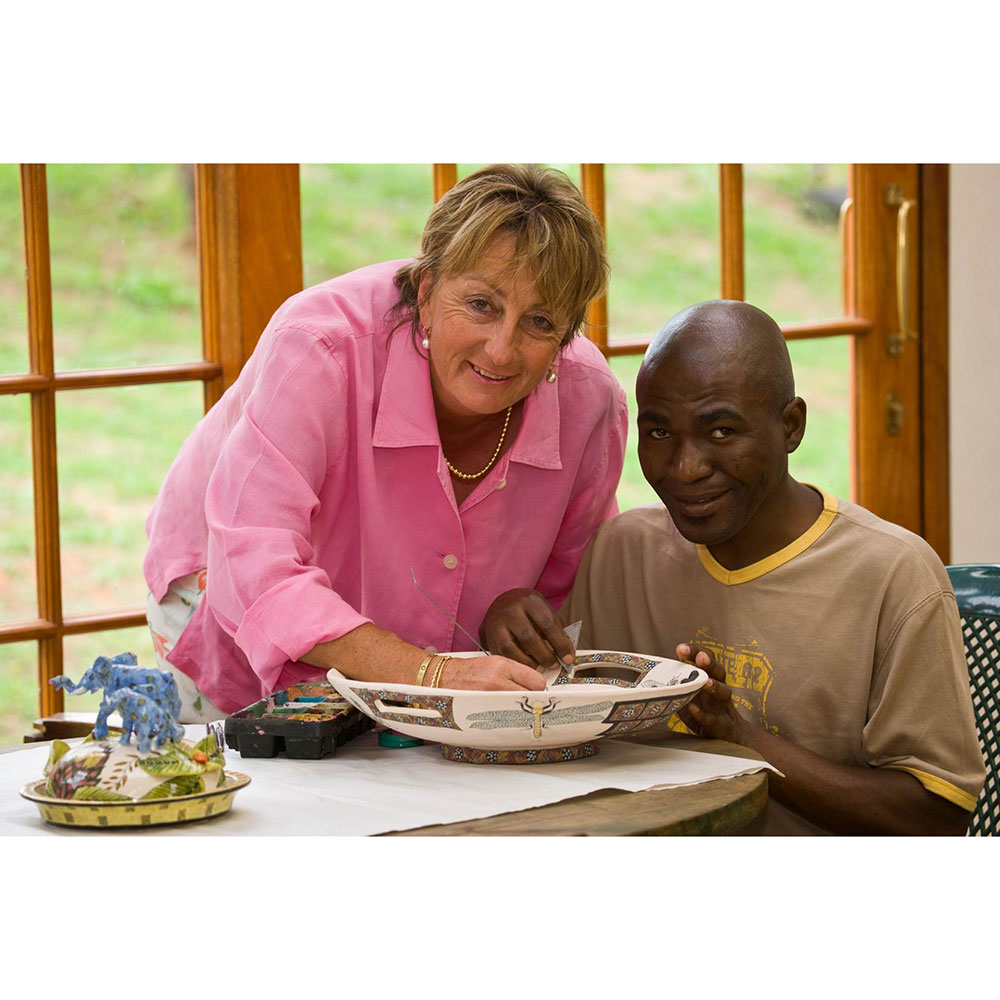
Ardmore founder Fée Halsted with artist Mickey Chonco
